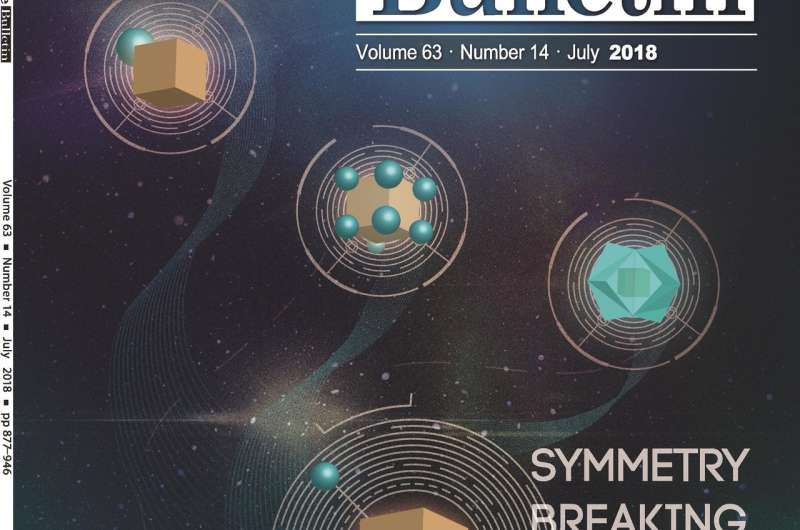Origin of symmetry breaking in the seed-mediated growth of bimetal nano-heterostructures

During seed-mediated growth, the Pd-Au nano-heterostructure can be either centrosymmetric Pd@Au core-shell trisoctahedra or asymmetric Pd-Au heterodimers. What causes the symmetry breaking of bimetal nano-heterostructures? A recent study proposes that the thermodynamic factor plays a key role for the symmetry breaking of bimetal nano-heterostructures during seed-mediated growth.
In the field of nanomaterials, control of the symmetry (e.g., centrosymmetry or non-centrosymmetry) of nano-heterostructures is of significance and attracts extensive attention because it offers an efficient means to achieve complex structures and realize novel properties that are usually inconceivable for homogeneous particles or symmetric nano-heterostructures. However, it remains a great challenge to produce asymmetric bimetal nano-heterostructures via seed-mediated growth, as crystal structures of metals are usually of high symmetry. As for noble metals of face-centered-cubic (fcc) structure, in the seed-mediated growth of bimetal nano-heterostructures, the final products preferentially maintain the symmetry of the seed materials (i.e., forming a core-shell structure). In a recent work published in Science Bulletin, Q. Kuang and Z. X. Xie, et al propose that the difference of equilibrium electro-chemical potentials of two metals in the growth solution (corresponding to their Fermi levels) is the driving force that thermodynamically determines the symmetry breaking in the seed-mediated growth of bimetal nano-heterostructures or not, i.e., forming either asymmetric or centrosymmetric bimetal nano-heterostructures.
The proposed idea was first demonstrated by the seed-mediated growth of Au on Pd nanocube seeds. With changing the concentration of a reductant, L-ascorbic acid, in the growth solution, the relative position of Fermi levels of the Pd nanocube seeds and the second metal Au in the growth solution was found to be reversed, and accordingly, the structure of products evolved from centrosymmetric Pd@Au core-shell trisoctahedra to asymmetric Pd-Au hetero-dimers. This is because the local electron distribution of the cubic Pd seeds would change due to electron transfer after the original heterojunction is built, which further affects the preferential reduction sites of Au on Pd seeds. According to the proposed theory, the evolution from the centrosymmetric Pd@Ag core-shell structure to the asymmetric Pd-Ag hetero-dimers was also realized by similar method. This result also indicates that it's entirely feasible to use ΔVoc, which is the difference of the open-circuit potentials between the two metal electrodes in a given solution, as the experimental criterion for judging the formation mode of bimetal nano-heterostructures via the seed-mediated growth.
These discoveries presented in this work provide a new insight into the formation mechanism of bimetal nano-heterostructures from the thermodynamic point of view, which is potentially helpful to achieve the rational design of bimetal nano-heterostructures with special properties and functions.
More information: Guifen Du et al, Origin of symmetry breaking in the seed-mediated growth of bi-metal nano-heterostructures, Science Bulletin (2018). DOI: 10.1016/j.scib.2018.05.035
Provided by Science China Press





















